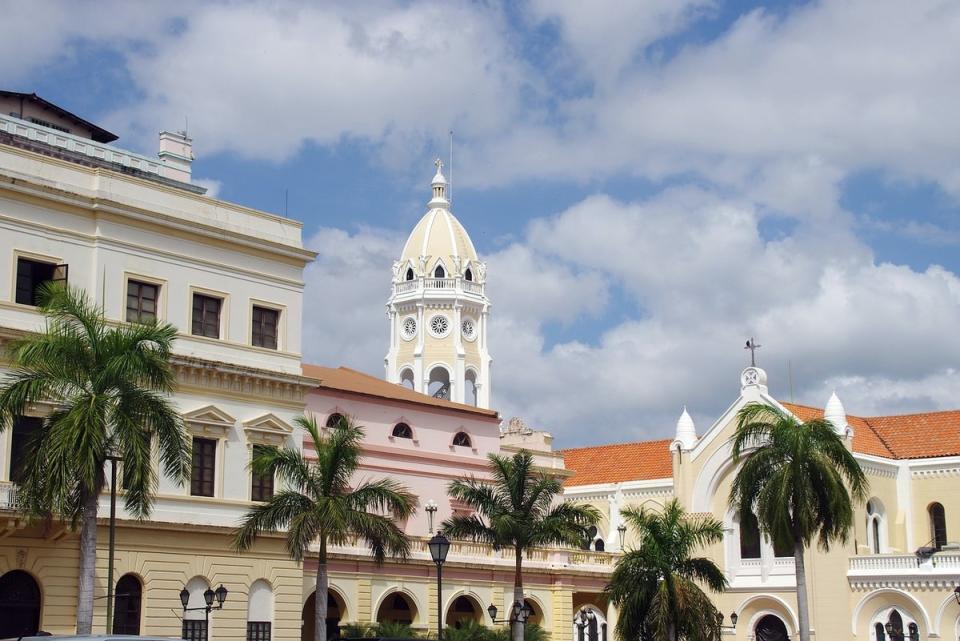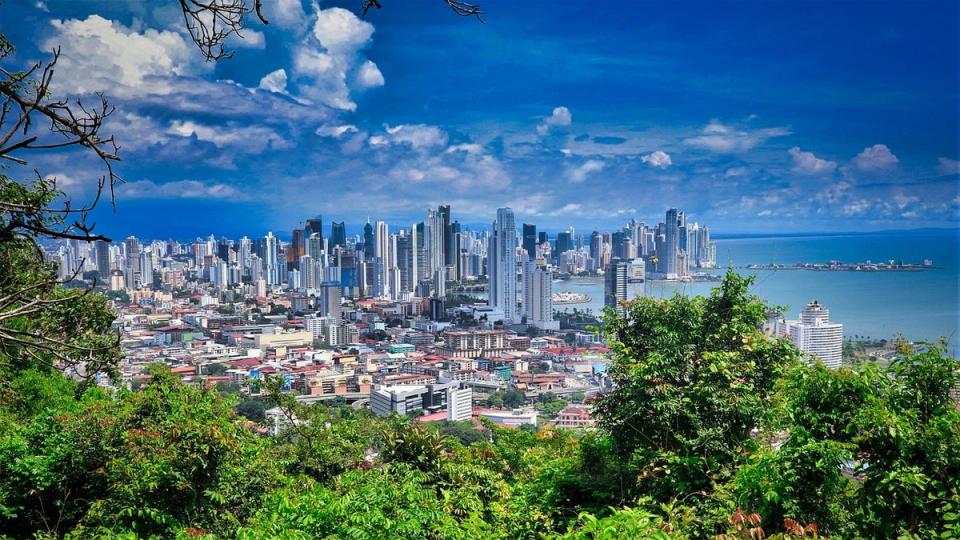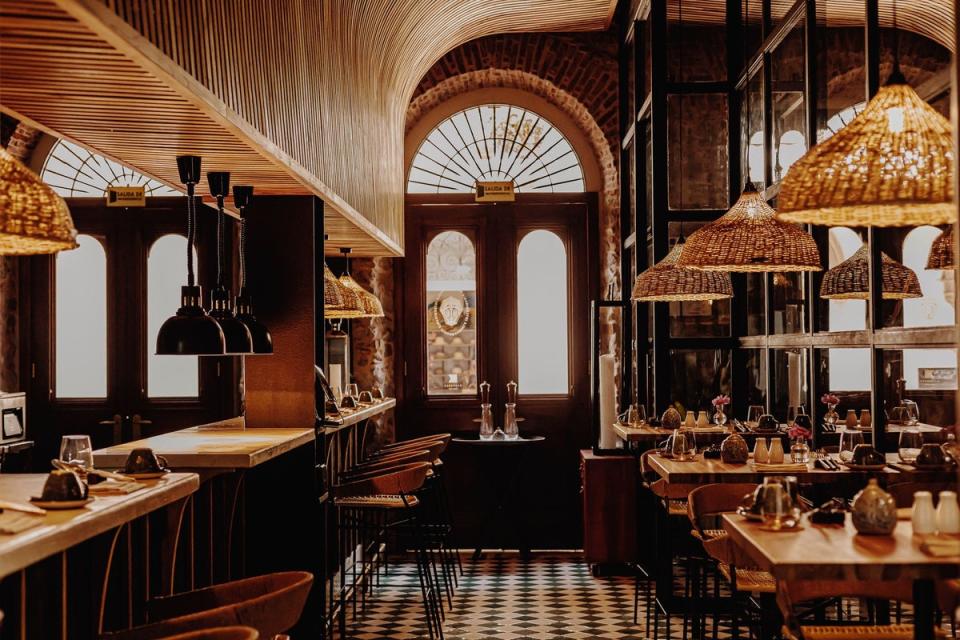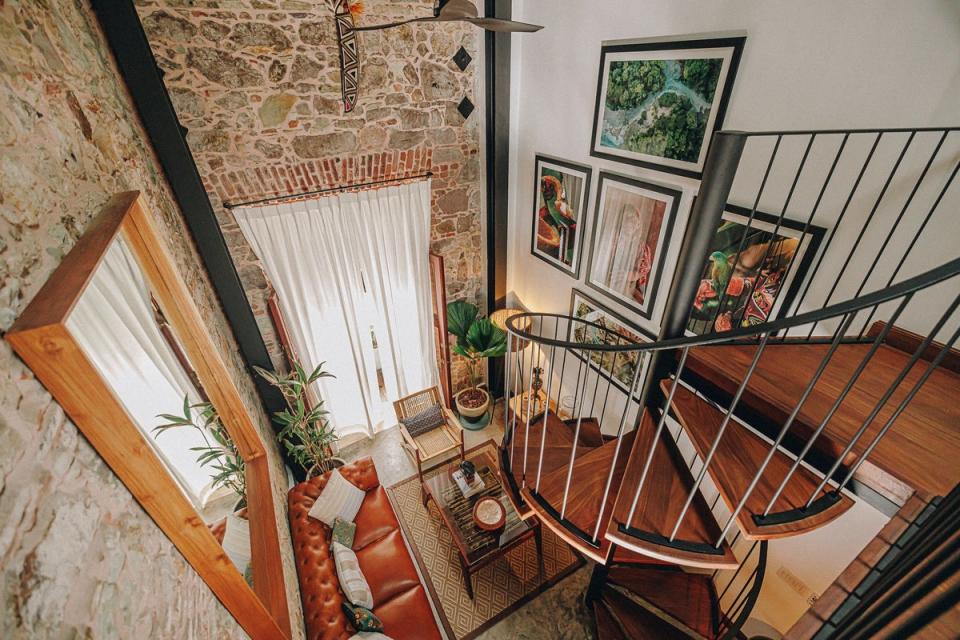Coffee, rum and sunny blue skies: the small tropical country of Panama has it all.
Although most people coming to Panama pass through Panama City and head to the tropical San Blas islands, there are still plenty of reasons to stop here. At the top of the list is lively Casco Viejo. Home to numerous churches and antique structures dating back to Spanish rule, this area is a World Heritage Site that has undergone rapid transformation in recent years.
From an abandoned area it has become one of the most fashionable areas of the capital; It’s brimming with stylish hotels and some of the capital’s best restaurants. Considering it’s still a hidden gem, now is the perfect time to visit this slice of the world: Here’s what to see, do and, most importantly, eat.
what to see

The best way to see Casco Viejo, one of the oldest parts of the city, is to walk its winding streets and enjoy the atmosphere.
Let your feet take you to the magnificent old Basilica, built in 1674 and one of the oldest buildings in the city; then return to Plaza de Francia, the easternmost point of the city, where there is a huge monument commemorating the workers who built Panama. The canal, but more importantly the excellent views of the surrounding city from the bastion walls (making it perfect for sunset walks).
From there, visit Casco Viejo’s many churches, including San José, famous for its golden altar; Asís’ San Francisco is in Plaza Bolívar and La Merced.
Do you still have time after this? Then a trip to Mercado de Mariscos, Panama City’s seafood market, is a must. Located on the edge of the old town, it’s worth a visit for the seafood vendors who will sell you cups of ceviche for $2; This might be the best thing you’ll experience during your entire vacation.
More of a history buff? The good news is there is entertainment in the form of the highly informative Panama Canal Museum. This recently refurbished museum contains surprisingly detailed exhibits on the city’s history and the infamous canal, which can be seen from some of the area’s tallest buildings (tickets cost £13, museodelcanal.com).
While wandering the streets, don’t forget to keep your eyes peeled for Panama’s true passion: coffee. It’s the home of the good stuff, and there are coffee shops on almost every corner serving both Italian-style coffee and ‘pour-over’, that is, fancy filter coffee.
You can’t go too far wrong, but for a truly intellectual tasting experience, we recommend heading to Sisu, which brings the cool of California to the damp streets of Casco Viejo.


Operated by longtime coffee growers Lamastus Family Estates, it’s the perfect place to sit back and try geisha coffee: a rare blend with a delicate, floral flavor native to Panama (more information here).
Or is the rum more your speed? Head to Pedro Mandinga, one of the only rum distilleries in Panama City. Luckily, Casco Viejo also runs a bar, so settle into the gorgeously decorated interior (wood paneling, floral wallpaper and leather sofas) and sample a rum flight of Panamanian rums for $20 or £18 (pedromandinga.com). try.
And for those who want to venture a little further afield, you can also explore the rest of Panama City. Although not terribly touristy, it’s worth paying the £5 Uber fare to visit the Metropolitan National Park, which is a 15-minute walk away but allows you to dive into the rainforest lurking on the edges of the city. Even better, it’s full of wildlife: We saw sloths, but toucans and monkeys can also be seen (tickets £3.50 per person, parquemetropolitano.org). Climb to the top for a spectacular view of the entire skyline.
where to eat
For truly top-notch dining, Fonda Lo Que Hay has to be first on the list. Founded in 2020, the restaurant has earned a reputation as one of Panama’s best dining destinations; it even made the list of the 50 Best Restaurants in Latin America.
Go here for fun, try traditional Panamanian dishes in an interesting way: Fried cassava with tuna melts in the mouth (and is the house special), Sexy Clams (clams with melting green sauce, served with coconut rice) are also amazing. And don’t forget to wash it all down with a cocktail, ideally a Paloma (meals cost around £150 for two, fondaloquehay.com)
Next up is Kaandela in Amarla. The recently opened restaurant offers some of the most exciting dishes in the area, incorporating fire and smoke into many of its dishes (some, like the smoky chocolate cake, with unexpected and delicious results). Sit at the open counter and watch the chefs work their magic by tweaking old classics: ceviche with passion fruit sauce and Panamanian paella are particularly notable. Or, if you’re feeling brave, opt for the tasting menu and let them decide (meals cost £150 for two, kaandela.com).


For those looking for a simpler dinner (or drinks, actually), La Pulperia is a good choice. As its name suggests, it serves octopus, but with a menu that highlights local dishes like ceviche and empanadas. But don’t miss the truly amazing cocktail list, which ranges from mojitos to the classic Panamanian shaved ice pudding (meals cost around £70 for two, lapulperia.pa).
Or if your tastes run towards the exotic, how about Enkai? Located in a small back street, this restaurant serves Peruvian/Japanese fusion that has to be tasted to be believed. Yes, there’s an extensive ceviche list, but there’s also a delicate tuna tartare and grilled fish in passion fruit sauce, definitely worth trying (meals cost around £100 for two, enkainikkei.com).
Where to stay
For a place that combines luxury with intimacy, Amarla Casco Viejo should be the place to go. A small (it has just seven rooms) boutique hotel tucked away in the streets of the old town, the gorgeous renovation of an old Spanish townhouse (dating back to the 17th century) makes it the perfect retreat after a long day of exploring.
While all the rooms are beautiful, we recommend spending time in the suite: spread over two floors, it’s decorated with Panamanian art as well as photographs of local wildlife (available for purchase) and has silk robes to lounge in. Navigate around expertly while sipping your morning coffee. There is a rooftop terrace with a plunge pool and sun loungers to relax on, and the interior features a study of plants and wood. Did we mention that Kaandela is home to one of the best restaurants in the city? Another reason to visit (rooms from £192, amarla.pa).


Is Amarla completely full (as it often is)? Then why not stop by the American Trade Hotel? Housed in what started out as an American merchant building in 1917, the building has been beautifully redesigned and now boasts a jazz club, several restaurants and immaculately designed rooms (rooms from £224, americantradehotel.com).
Then there is Hotel La Compañía. Located down the road in a former Jesuit monastery dating back to the 1700s, it’s now a lively hotel with two on-site restaurants (one for European fare, one for Spanish-inspired fare) and a sunset-worthy rooftop bar. Capella form (rooms from £280, hyatt.com) .
When to visit
Although Panama is hot all year round, January through April features blue skies, slightly less oppressive heat, and less chance of rain (which when it rains, it rains). Even though the prices are higher, we recommend traveling then.
How to get there
Flights to Panama City usually require passing through an intermediary city: you can fly with Air France via Paris or with KLM via Amsterdam.